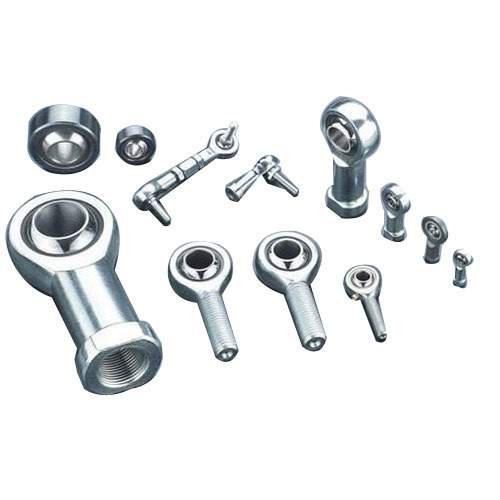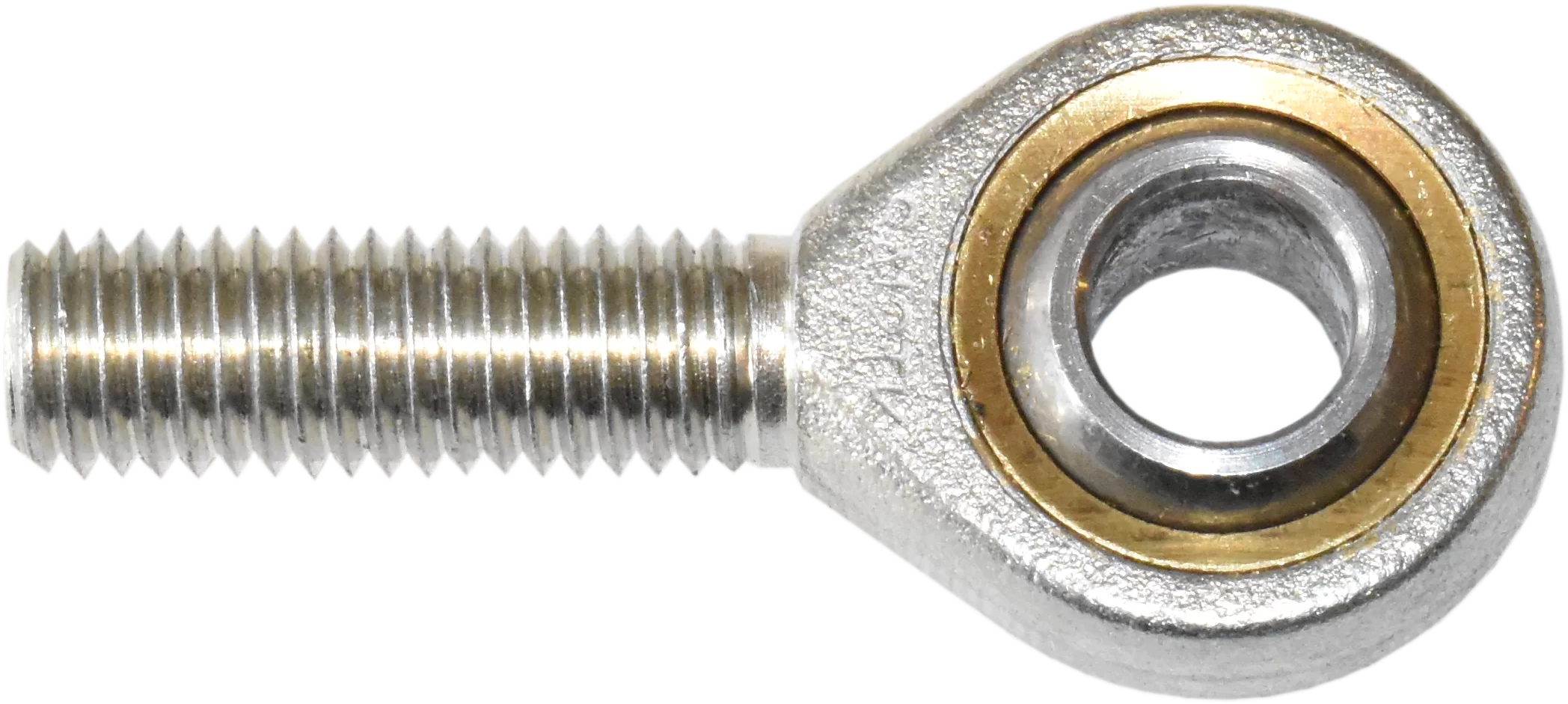
Impact of Temperature Variations and Environmental Conditions on Rod End Bearing Performance
Rod end bearings can be affected by temperature variations and environmental conditions, which may impact their performance. Here’s how these factors come into play:
1. Temperature Variations:
Temperature changes can influence the lubrication and material properties of rod end bearings. Extreme cold can cause lubricants to thicken, potentially leading to increased friction and reduced efficiency. On the other hand, high temperatures can cause lubricants to thin, which may result in inadequate lubrication and accelerated wear. Proper lubrication and material selection are crucial to ensure that rod end bearings operate optimally across a range of temperatures.
2. Contaminants and Moisture:
Industrial environments often expose rod end bearings to contaminants such as dust, dirt, and chemicals. Additionally, moisture and humidity can lead to corrosion and reduced bearing lifespan. Seals and boots can help protect rod end bearings from these elements, maintaining their performance and preventing premature failure. Regular maintenance, including cleaning and re-lubrication, is essential to counteract the effects of contaminants and moisture.
3. Corrosion Resistance:
Rod end bearings are available in various materials, including stainless steel, which offers excellent corrosion resistance. This is especially important in environments where exposure to moisture or chemical agents is common. Choosing the right material for the specific environmental conditions is crucial to prevent corrosion-related issues and ensure the long-term functionality of the bearings.
4. Material Expansion and Contraction:
Temperature variations can lead to the expansion and contraction of materials. This can affect the clearances within the bearing, potentially causing issues such as increased play or reduced load-carrying capacity. Proper bearing design and material selection, as well as regular inspections, can mitigate these effects.
5. Lubrication Intervals:
In extreme temperature or environmental conditions, more frequent lubrication may be necessary to maintain optimal performance and protect rod end bearings from premature wear. Lubricants should be chosen based on their suitability for the given operating conditions.
Overall, temperature variations and environmental conditions can impact rod end bearing performance. Proper maintenance, material selection, and environmental safeguards, such as seals and boots, are essential to ensure that rod end bearings continue to function reliably in diverse operating environments.

Maintenance Practices to Extend the Life of Rod End Bearings
Rod end bearings play a crucial role in various mechanical systems, and proper maintenance can significantly extend their lifespan. Here are some specific maintenance practices to consider:
1. Lubrication: Regularly lubricate the rod end bearing according to the manufacturer’s recommendations. Proper lubrication reduces friction, minimizes wear, and prevents corrosion. Use high-quality lubricants suitable for the application’s conditions.
2. Inspection: Perform routine inspections to check for signs of wear, damage, or contamination. Look for play, unusual noises, visible damage, and any other indicators mentioned earlier. Timely detection of issues allows for prompt corrective action.
3. Cleanliness: Keep the surrounding environment clean to prevent contamination. Dust, dirt, and debris can lead to premature wear and damage. Regularly clean the bearing housing and sealing mechanisms.
4. Environmental Protection: In applications exposed to harsh environments, consider protective measures such as seals and shields to prevent contamination and reduce exposure to moisture, dust, or chemicals.
5. Alignment: Ensure proper alignment of rod end bearings within the system. Misalignment can increase stress on the bearing and lead to premature failure. Correct any alignment issues promptly.
6. Avoid Overloading: Be mindful of load capacities and avoid subjecting rod end bearings to excessive loads. Overloading can lead to rapid wear and shortened bearing life. Use bearings with appropriate load ratings for the application.
7. Regular Maintenance Schedule: Establish a maintenance schedule that includes lubrication, inspections, and cleaning. The frequency of maintenance depends on factors like operating conditions, load, and the manufacturer’s recommendations.
8. Replacement of Seals: If your rod end bearings have seals or shields, periodically check their condition. Replace damaged or worn-out seals to maintain effective contamination protection.
9. Storage: When storing spare rod end bearings, ensure they are kept in a clean, dry, and temperature-controlled environment. Use appropriate storage methods to prevent corrosion or damage before installation.
10. Expert Advice: If you’re unsure about maintenance or replacement procedures, consult with the bearing manufacturer or a qualified technician for guidance and assistance.
By following these maintenance practices, you can extend the life of rod end bearings, reduce downtime, and ensure the reliable performance of the systems in which they are used.

Advantages of Rod End Bearings
Rod end bearings offer several advantages compared to other bearing types, making them suitable for specific applications that require articulation, flexibility, and precise control. Here are some key advantages of rod end bearings:
- Articulation: Rod end bearings are designed to provide articulation, enabling movement in multiple directions. They allow for angular misalignment, making them ideal for applications that require flexible connections and motion control.
- Angular Misalignment: They can accommodate both static and dynamic angular misalignment. This ability to handle misalignment is a significant advantage in applications where components may not align perfectly.
- High Load Capacity: Rod end bearings are capable of handling both static and dynamic loads. They are used in applications where significant forces or loads need to be transmitted, such as in heavy machinery and construction equipment.
- Precision: These bearings provide precise control and movement. They are often used in applications where accurate positioning and control of mechanical components are essential, such as in aerospace and robotics.
- Corrosion Resistance: Many rod end bearings are available with corrosion-resistant coatings or materials, making them suitable for use in challenging environments, including marine and industrial settings.
- Durability: Rod end bearings are built to withstand harsh conditions, making them durable and long-lasting. They can handle the rigors of heavy-duty applications, ensuring reliability and performance over time.
- Versatility: These bearings find applications in a wide range of industries, from automotive and aerospace to industrial machinery and marine. Their versatility is a significant advantage for engineers and designers.
Overall, rod end bearings excel in applications that require a combination of articulation, load-bearing capacity, and precision. Their ability to handle misalignment and provide reliable performance in demanding environments makes them a preferred choice in various industries.


editor by CX 2024-04-12